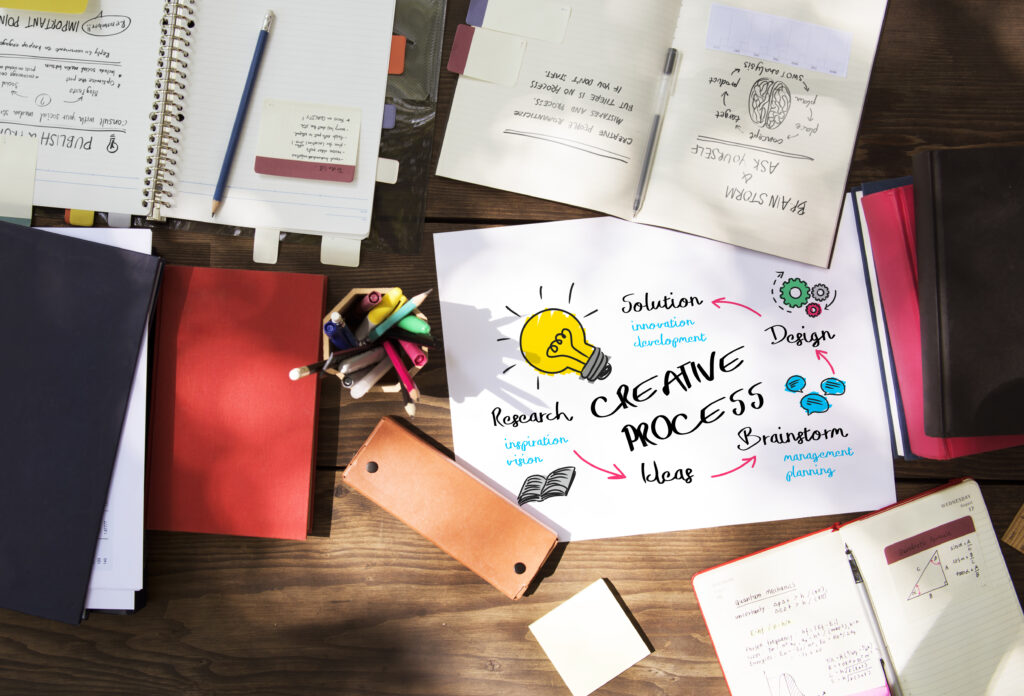
Creative Ideas Identity Product Develop Design
In an era where artificial intelligence (AI) dominates creative industries—from generating logos to writing copy—many brands are starting to ask: Can machines truly tell stories that connect on a human level? While AI offers efficiency and speed, human designers bring empathy, intuition, and emotional depth that machines can’t replicate. At Wing Mate Studio, these qualities form the foundation of every creative project, ensuring that brand storytelling remains authentic, engaging, and deeply human.
In this comprehensive guide, we’ll explore why AI often falls short in creative storytelling and how Wing Mate Studio uses human creativity to craft meaningful brand experiences that resonate across audiences.
The Rise of AI in the Creative Industry
The creative industry has been revolutionized by AI tools capable of generating visual content, writing marketing copy, and even designing entire brand identities. Platforms like Midjourney, ChatGPT, and Canva’s Magic Design have made content creation faster and more accessible than ever before.
However, speed doesn’t equal soul. While AI can replicate aesthetics, it often lacks context, emotion, and purpose—the three pillars of effective storytelling. The result is content that may look appealing but feels generic and emotionally flat.
Why AI Falls Short in Brand Storytelling
Brand storytelling isn’t just about visuals or catchy phrases—it’s about connecting deeply with people’s emotions and values. AI, despite its data-driven brilliance, struggles with:
1. Emotional Authenticity
AI can simulate tone and style, but it doesn’t understand the human experience. It can’t empathize, feel nostalgia, or grasp the subtle cultural nuances that shape emotional resonance.
2. Contextual Understanding
A brand’s story is built on its mission, history, and audience. Without human interpretation, AI may misread context, leading to misaligned visuals or off-brand messaging.
3. Ethical and Cultural Sensitivity
Human designers consider ethics, inclusivity, and culture. AI, trained on vast (and often biased) data sets, can unintentionally produce stereotypical or insensitive content.
4. Originality and Intent
AI learns from existing data. It can remix, but not originate. That means it can’t create with intention or innovation, only repetition and variation.
The Human Touch
At Wing Mate Studio, storytelling isn’t just a service—it’s an art form guided by human insight. Every color, font, and phrase carries meaning shaped by empathy, experience, and culture. Human designers understand how design makes people feel, not just what looks good.
Unlike AI, human creativity thrives on imperfection. Those imperfections—spontaneous ideas, personal experiences, emotional intuition—are what make brand stories feel alive.
How Wing Mate Studio Blends Creativity and Strategy
The creative process at Wing Mate Studio merges strategic thinking with emotional storytelling. Here’s how:
1. Brand Discovery Sessions
Before any design begins, Wing Mate Studio engages deeply with clients to understand their story, audience, and values. These insights lay the foundation for an authentic narrative.
2. Human-Centered Design
Every project revolves around people first—their emotions, desires, and motivations. This ensures that each design speaks directly to the intended audience.
3. Collaborative Ideation
The team thrives on collaboration. Designers, writers, and strategists brainstorm ideas that reflect both logic and emotion, producing concepts that machines simply can’t.
4. Purpose-Driven Visuals
Wing Mate Studio crafts visuals that communicate identity and emotion, not just aesthetics. Each color palette, texture, and font is chosen for a reason that aligns with the brand’s purpose.
When Human Design Outshines AI
Imagine an AI tool designing a luxury fashion brand’s logo. It may produce elegant, symmetrical shapes—but miss the emotional story behind the brand’s heritage.
At Wing Mate Studio, a human designer would dive deeper—understanding the craftsmanship, cultural influence, and emotional symbolism behind the brand. The final result would not just look elegant but feel luxurious, reflecting authenticity and history that AI cannot comprehend.
The Psychology Behind Human Design
Design psychology reveals why human-created stories resonate more deeply. Humans subconsciously respond to design elements like color, typography, and rhythm when they’re used with emotional intent.
For example:
- Warm tones evoke comfort and trust.
- Organic shapes feel friendly and approachable.
- Deliberate imperfections add authenticity.
These psychological cues are hard for AI to interpret meaningfully, but human designers instinctively weave them into their creative process—something Wing Mate Studio excels at.
The Art of Empathy in Branding
Empathy is at the heart of storytelling. It’s what helps designers see through the eyes of the audience, anticipating their emotions and reactions.
AI can analyze behavior but not feel compassion. At Wing Mate Studio, empathy drives every design choice—from visual tone to narrative voice—ensuring each story touches hearts, not just screens.
Beyond Aesthetics: Designing Experiences
Modern branding goes beyond visuals; it’s about creating immersive experiences. Wing Mate Studio doesn’t just design logos—it builds emotional journeys that reflect a brand’s personality at every touchpoint.
Through UX design, motion graphics, and digital storytelling, the team blends creativity with strategy, ensuring that each interaction strengthens emotional connection. It’s not just design—it’s experience design with purpose.
Why Brands Still Need Human Designers
Despite rapid AI innovation, brands that rely solely on automation risk losing their unique identity. Authentic design demands human intuition, something no algorithm can replicate.
Here’s why brands still turn to studios like Wing Mate Studio:
- Emotional Connection: Humans design for feelings, not formulas.
- Cultural Sensitivity: Real people understand social cues and context.
- Innovation: Creativity isn’t learned from data—it’s sparked by imagination.
- Authenticity: Audiences trust brands that feel real, not robotic.
The Future
At Wing Mate Studio, AI isn’t seen as a threat—it’s a tool. Used wisely, AI enhances efficiency, while humans remain the creative directors of meaning.
The future of design lies in collaboration, where AI handles repetitive tasks and human designers focus on vision, storytelling, and emotional depth. This partnership allows creativity to flourish while maintaining authenticity.
Lessons from the Wing Mate Studio Approach
Every project at Wing Mate Studio teaches a key lesson:
Technology may create, but only humans can connect. Through empathy, artistry, and strategy, the studio proves that authentic storytelling is a human superpower. It’s not about rejecting AI—it’s about using it intelligently while preserving what makes creativity human.
Conclusion
As AI continues to evolve, one truth remains unshakable—stories that move people are told by people. Technology may accelerate the creative process, but human designers give it soul.
Wing Mate Studio stands as a beacon for brands seeking genuine connection. By blending human creativity with digital tools, the studio reminds us that the most powerful designs come not from algorithms, but from hearts, minds, and stories that feel real.

